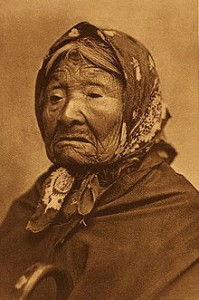Woohoo, let the Games begin! Yep, I love the Olympics. Here’s why…
What do you love about the Olympics? Do you have a favorite event? Drop your Favorite Five in the comment box below and join in the conversation.

It has been a summer of art at our house. My hubby has been hunkered down in his art studio working away on his new project, I’ve been writing into the wee hours of the night, and our daughter has been painting her way through a swirl of art camps.
It has all been delightful.
That is until last week.
 Behind the Scenes: Johannesburg, May 1994. It’s a new day in South Africa. Historic change electrifies the air. Apartheid, the government’s official policy of racial segregation, has finally come to an end, and Nelson Mandela is about to be elected the country’s first black president in nearly three hundred fifty years.
Behind the Scenes: Johannesburg, May 1994. It’s a new day in South Africa. Historic change electrifies the air. Apartheid, the government’s official policy of racial segregation, has finally come to an end, and Nelson Mandela is about to be elected the country’s first black president in nearly three hundred fifty years.
The emotion surging through Jeffrey Aaronson as he photographs this momentous occasion mimics that of the country’s new flag shimmering in the wind.
It’s impossible to repress his awe, remembering it had been just four years earlier that Nelson Mandela had been released from prison after serving a 27-year sentence for leading the armed struggle against apartheid.
Mandela’s prophetic words, uttered upon his release from prison couldn’t ring more true today:
“Our march to freedom is irreversible”
Nelson Mandela turns 94 today. And what an extraordinary 94 years this man has lived! Few people in the world inspire me more.
“No one is born hating another person because of the color of his skin, or his background, or his religion. People must learn to hate, and if they can learn to hate, they can be taught to love, for love comes more naturally to the human heart than its opposite.”
–Nelson Mandela
Clearly, millions of others feel the same as I do, as people from all across the globe are celebrating Mandela’s remarkable life by taking part in Mandela Day.
“The overarching objective of Mandela Day is to inspire individuals to take action to help change the world for the better, and in doing so build a global movement for good.”
Citizens worldwide are devoting 67 minutes of community service to pay tribute to Mandela’s 67 years of service, and the profound impact South Africa’s first black president, Nobel Peace Prize laureate, and anti-apartheid activist has made on the world
I encourage you to take part in Mandela Day too.
Click here to read 67 Ways to Change the World. I think you’ll be surprised by how easy it is to make a difference.
How do I plan to make a difference today? By doing three simple things: 1) Sharing this idea and hopefully inspiring others to do the same, 2) Delivering meals to homeless people here in Santa Barbara, and 3) Donating art supplies and clothing for a project my friend, Lori Robinson, is supporting in Africa. You might remember my post about Lori entitled, Africa’s Beautiful Bag Lady. Not only is she still working on trying to eliminate plastic bags in Tanzania, but she’s helping with a project called Dancing Hope. This project’s goal is to help children in one of the largest slums in Africa by giving them the gift of art and music. Click here to learn more.
I can think of no better way to kick off this day than to post a rousing version of “Free Nelson Mandela.” This 1984 protest song, railing against apartheid and Mandela’s imprisonment, will forever be etched in my memory, and take me back to the days of dancing on the lawn at Lewis & Clark College, where a small, but boisterous group of student protesters built a shantytown, symbolic of the conditions for black people in South Africa, demanding our school divest. It’s an indelible reminder of what is possible when the world comes together in all its different ways to create change.
This version was sung by the late Amy Winehouse during the 2008 “46664 Concert” in London. 46664 concerts are a series of AIDS charity events played in honor of Nelson Mandela by South African musicians. Mandela was imprisoned on Robben Island in 1964, and was the 466th prisoner to arrive that year.
How has Nelson Mandela inspired you? Will you be participating in Nelson Mandela Day? If so, how do you plan to make a difference (big or small)? One way you can take part is by sharing this post so others can be made aware of this special day and the numerous ways to get involved.
PS: Check back tomorrow and read about what it was like for Jeffrey to be at the frontline of history, photographing Nelson Mandela when he became South Africa’s first black president in 350 years.
@Becky Green Aaronson 2012
EDWARD SHERIFF CURTIS
“Shadow Catcher” (1868-1952)
Perhaps America’s best-known photographer of Native Americans and the West, Edward S. Curtis spent three decades immersed in the culture of our nation’s indigenous peoples during the early 1900′s .
His ambitious project involved photographing more than eighty tribal groups west of the Mississippi–everyone from the Eskimo (Inuit) in the far north to the Hopi and the Comanche in the southwest to the Ute and Cheyenne and a multitude of others in between.
Curtis was born in 1868 near Whitewater, Wisconsin where he lived until he was six years old. HIs father, a Reverend and Civil War veteran, then moved the family to Minnesota.
Around that time more than 200 battles were being fought between US troops and Native American tribes–from the Dakota Territory down to Mexico. When Edward Curtis was eight years old Sioux and Cheyenne warriors defeated General George Custer and his troops at the Battle of Little Big Horn.
 Curtis went to school until sixth grade then dropped out. Soon after he became interested in photography and built his first camera. The lens for his camera was brought back from the Civil War by his father. He and his father also shared a love of the outdoors and spent time together camping and canoeing. At seventeen, Curtis became an apprentice photographer in St. Paul, then two years later, when his family moved to Seattle, he became a partner in a photo studio.
Curtis went to school until sixth grade then dropped out. Soon after he became interested in photography and built his first camera. The lens for his camera was brought back from the Civil War by his father. He and his father also shared a love of the outdoors and spent time together camping and canoeing. At seventeen, Curtis became an apprentice photographer in St. Paul, then two years later, when his family moved to Seattle, he became a partner in a photo studio.
His first Native American portrait, created in 1896, was of Princess Angeline, the elderly daughter of Chief Sealth of Seattle. It wasn’t long after that he launched into his epic project documenting the Native American traditional way of life–their dress, ceremonies, food, clothing, dwellings, burial customs, manners, and daily life.
Though he struggled to gain funding, eventually J.P. Morgan offered him $75,000, to be paid at $15,000 per year for five years, to create his 20-volume series entitled The North American Indian. It would comprise over two thousand photogravure plates and narrative about America’s indigenous, and Curtis feared, vanishing people. Native Americans were considered “savages” by many at the time, forced from their land and stripped of their rights.
Curtis would later write the following foward to Volume I of The North American Indian.
“The passing of every old man or woman means the passing of some tradition, some knowledge of sacred rites possessed by no other; consequently the information that is to be gathered, for the benefit of future generations, respecting the mode of life of one of the great races of mankind, must be collected at once….”
During this ambitious project, Curtis became known by some tribes as the “Shadow Catcher” as he captured the likeness of many important and well-known Indian people of that time, including Geronimo, Chief Joseph, Red Cloud, Medicine Crow and others. Not only did he create thousands of images, but he recorded hours of rare ethnographic information, including some 10,000 wax cylinder sound recordings of Indian speech, music, and tribal mythologies.
It took far more than five years to create all twenty volumes, and far more money. Curtis sacrificed much in order to fulfill his dream of documenting America’s indigenous peoples. Not only was he perpetually broke, and continually trying to find financing for the project, but his family life took a beating as well. His wife divorced him after twenty-seven years and his four children grew up essentially with an absent father much of their childhoods.
Curtis’ photographs, while recognized as some of the most important work of its time, have received criticism because they are said to be romanticized versions of Native American culture, and contrived reconstructions rather than true documentation. He was known at times to remove “modern” items from an image to make it more authentic.
Below are images selected from The Library of Congress’s Edward S. Curtis Collection. Some were published in The North American Indian. Others were not.
 See if you can NAME THAT PHOTOGRAPHER from the following five clues:
See if you can NAME THAT PHOTOGRAPHER from the following five clues:
1) This photographer dropped out of school in sixth grade and soon after built his or her first camera.
2) This photographer famously said: “Optimism, unaccompanied by personal effort, is merely a state of mind and not fruitful.”
3) This photographer was born in Wisconsin, moved to Minnesota, then later to Seattle, eventually settling in Los Angeles.
4) To earn money this photographer worked as an uncredited assistant cameraperson for Cecil B. DeMille during the filming of The Ten Commandments.
5) This photographer’s collection at the Library of Congress offers us an extensive look back into our history with more than 2,400 silver-gelatin, first generation photographic prints – some of which are sepia-toned – made from original glass negatives.
Leave your guess in the comment box below and check back tomorrow to see if you are correct.
 The other night I had the privilege of listening to author, Jonah Lehrer, speak about his best-selling book, Imagine: How Creativity Works.
The other night I had the privilege of listening to author, Jonah Lehrer, speak about his best-selling book, Imagine: How Creativity Works.
When 31-year old Rhodes Scholar and Wired editor, Lehrer, sauntered onto the stage at UCSB, smiled through his urban-hip geeky glasses, then started spewing insights in his highly-caffeinated manner, I felt like I’d just been hit with a double-espresso shot of inspiration.
Lehrer’s talk flowed just like his book, mixing neuroscience and entertaining anecdotes about famous creative breakthroughs and aha moments.
He shared stories about a wide range of characters—everyone from poets, musicians, and advertising executives to inventors, scientists and educators, deconstructing the process of how we accomplish some of our greatest feats of creativity.
 While Imagine has been blasted in several reviews for scientific inaccuracies (The Guardian and The New York Times, in particular), I find this book irresistible.
While Imagine has been blasted in several reviews for scientific inaccuracies (The Guardian and The New York Times, in particular), I find this book irresistible.
None of the information on its own is necessarily groundbreaking, but the way in which Lehrer presents it with his fine writing, connecting the creative dots, and making the science approachable for non-scientific readers, creates a book that is not only delightful, but enlightening.
I knew Imagine was for me when the author kicked off the first chapter describing the genesis of one of Bob Dylan’s best-known songs, Like a Rolling Stone. Dylan, who was burned out at the time—sick of his music and sick of other people’s expectations of him—got on his Triumph motorcycle sans guitar and headed to an empty house in Woodstock. There, after essentially quitting and letting it all go, he ended up creating one of the most inspired pieces of his musical career.
Lehrer hands us one entertaining anecdote after another then peppers it with science, explaining why a particular breakthrough may have occurred. There’s the tale of how masking tape was invented and other common items like Post-it Notes and the Swiffer mop, then there’s the story of how Nike’s famous “Just Do It” logo was created.
“Every creative journey begins with a problem,” he explains. “It starts with a feeling of frustration, the dull ache of not being able to find the answer. We have worked hard, but we’ve hit the wall. We have no idea what to do next…Thanks to how we’re hardwired, it’s often only at this point, after we’ve stopped searching for the answer, that the answer arrives.”
Haven’t we all experienced this in our creative lives? Just when we’ve nearly thrown in the towel, some nugget of inspiration has fallen into our laps and given us the spark we needed to keep going.
What I like about this book is that Lehrer challenges pre-conceived notions about creativity and tries to demystify the process. He believes we all have the ability to be creative if we cultivate certain thought processes, and if we apply a large dose of grit.
As a writer, I loved being reminded about the grit factor, the need to dig deep and be persistent, putting in hours of hard work—as in the “1 percent inspiration, 99 percent perspiration” notion. Best-selling memoirs don’t just magically happen. They take months, sometimes years of writing and re-writing.
Lehrer quotes neuroscientist, Nancy Andreasen, who says,
“Successful writers are like prizefighters who keep on getting hit but won’t go down. They’ll stick with it until it’s right.”
He also quotes famous graphic designer, Milton Glaser, who has the slogan ART IS WORK chiseled in the glass of his studio:
“There’s no such thing as a creative type. As if creative people can just show up and make stuff up. As if it were that easy. I think people need to be reminded that creativity is a verb, a very time-consuming verb.”
My timing in reading this book has been fascinating, as so many of the ideas have infolded in front of me while watching my husband agonize over the creation of an extremely complex piece of art he’s been working on for the past six months. Each part of the design, each medium he’s used (photography, paint, gouache, collage, paper, metal, ink, pencil), and each decision he’s made has been one of intense thought, piles of research, hours of learning new techniques, and even more hours of being hunched over his art table doing the work. Throughout this process he has hit the wall numerous times, felt like he’s lost his mind in even attempting to construct this concept. But just as it’s driving him mad, a solution comes—in the middle of the night, when he’s walking, when he’s listening to NPR, when he’s chatting with colleagues about random subjects, or when he’s looking at other’s art.
While Imagine isn’t a prescriptive book about how to be more creative, Lehrer does offer a few strategies about remaining creative over time:
A few other fun tidbits culled from this book include: the color blue is said to increase creativity, as does caffeine, daydreaming, and relaxing. That must be why I do some of my best thinking in the backyard, sipping iced lattes while writing under blue skies; and why ideas always pop into my head while I’m relaxing in a long, hot shower or going on a delicious, meandering run. It’s all about the dopamine, baby!
The take-away message from this multifaceted book is that creativity is hard-wired in the human brain and we can enrich that quality in ourselves and in our society. “It’s time to create the kind of culture that won’t hold us back,” Lehrer says, “We have to make it easy to become a genius.”
If you’re looking for a book to inspire and stir your imagination, by all means read Imagine, especially if you love a good behind-the-scenes story about how things are created, and how some of our best creations have come from failures. If you’re searching for precise scientific data about how our creative minds work, this book might frustrate you with its reported errors and generalizations. Head to scientific journals instead.
I rate this book a solid 4.5 out of 5 stars.
What are your thoughts about this book? And what are your thoughts about Lehrer’s recent “self-plagiarism” controversy? Drop your two cents into the comment box. I’d love to know what you think.
©Becky Green Aaronson 2012
When I was a kid my family spent every 4th of July at my Auntie Margie and Uncle J’s house. Uncle J would unfurl the American flag from the top window of their classic Craftsman house, then he’d fire up the BBQ while Auntie Margie and her two sisters prepared food in the kitchen, telling stories and chortling about life’s absurdities—especially the challenges of raising a gaggle of kids.
Auntie Margie had six kids—three boys and three girls, all whom I adored. Mom had us four kids and my other sweet auntie, Katie, had a small brood herself, with three girls and a boy.
We were a tight clan, especially on the 4th of July, when a blaze of cousins, and later, second cousins, would find all sorts of ways to get into mischief. If we weren’t sneaking food or running around my aunt and uncle’s one-acre property, we were throwing walnuts or crabapples at each other, lighting fireworks, starting water fights or playing Marco Polo in the swimming pool. Grandma, our no-nonsense pillar of dignity, would sit in a woven lawn chair taking it all in, trying not to chuckle at our antics, but always being betrayed by her twinkling eyes.
I loved everything about our rich family 4th of July tradition, from Credence Clearwater Revival playing in the background to the photograph we took every year in which everybody lined up and said, “Cheeez” for posterity.
The other thing I loved was knowing exactly where I’d be every Independence Day. It felt comfortable and predictable.
The fact of the matter is that it was the only place we could be. That is if we wanted Auntie Margie to be part of the celebration.
You see Auntie Margie suffered from agoraphobia.
Agoraphobia is a mental disorder that affects 3.2 million people. According to Medicine.net, it’s defined as:
“A fear of being outside or otherwise being in a situation from which one either cannot escape or from which escaping would be difficult or humiliating. It is a subset of panic disorder involving the fear of having a panic attack in such environments.”
Panic attacks often involve intense fear, disorientation, rapid heartbeat, dizziness or diarrhea, and sufferers may go to great lengths to avoid situations which may trigger them. In severe cases they may become unable to leave their home or safe haven.
There are a number of theories about what might cause agoraphobia, and like other mental disorders, it’s usually triggered by several factors–everything from genetics (it tends to run in families) to repeated exposure to anxiety-provoking situations to things like alcohol or cigarettes. It’s twice as common in women than men, and usually occurs between 20 and 40 years of age.
Auntie Margie’s case was severe. She literally did not leave the confines of her one-acre property for more than thirty years. No, that’s not a typo. Thirty years.
Before you start envisioning creepy images of Howard Hughes or some socially deranged person, you should know that Auntie Margie was the farthest thing from that.
In fact you’d never know she had a mental illness. She was up on all the news, pop culture, and music. She was a voracious reader. She wore make-up, painted her fingernails, hosted fancy Valentine’s Day gatherings, had a fantastic sense of humor and was wildly creative—a painter, gardener, seamstress, craftsperson, woodworker, house designer. Most of all, she was a superb actress. She never talked about her struggles and in fact, acted as if her life was just like yours or mine.
I loved Auntie Margie deeply. She was like a second mom—somebody I felt a connection to from an early age—especially after living next door to her for the first six years of my life. We laughed and talked in her kitchen, and we played games like Boggle and Uno. She French braided my hair, sewed me dresses, and let me help in her garden. I always felt special when I was with her, even if we were just shooting the breeze and eating cucumber sandwiches under the apple tree in her backyard.
Auntie Margie’s agoraphobia haunted me though, especially as I got older. I wanted to get her help. I wanted to break her free of her chains.
I wanted her to see the beach again. I wanted her to eat buttered popcorn with me at the movies. I wanted her to be wrapped in the magic of an art supply store. I wanted her to be able to get her hair done at a salon and have lunch with her sisters somewhere besides her kitchen. I wanted her to go for a drive in the country or breathe fresh mountain air. I wanted her to be free.
So what stopped me from getting her help?
Fear, plain and simple.
My mom warned me over and over, “If you confront her about it, she’ll never speak to you again.” Mom and I argued about this more than a few times. “How could we NOT get Auntie Margie help?” Mom loved her sister more than anything, but she was paralyzed by fear too. So was the entire family. Margie’s agoraphobia was the elephant in the room nobody talked about, even though everybody wanted to do something to help.
Her husband, a World War II veteran, and a man of extreme honor, carried the burden of her illness for more than three decades. I will always consider him a King Among Men because most husbands never could, or would have endured what he did. It’s impossible to imagine the range of emotions he must have felt all those years, but he stuck by his wife and kids in sickness and in health, in good times and in bad.
_____
And then after thirty-two years, one day, by some miracle, Auntie Margie left the house.